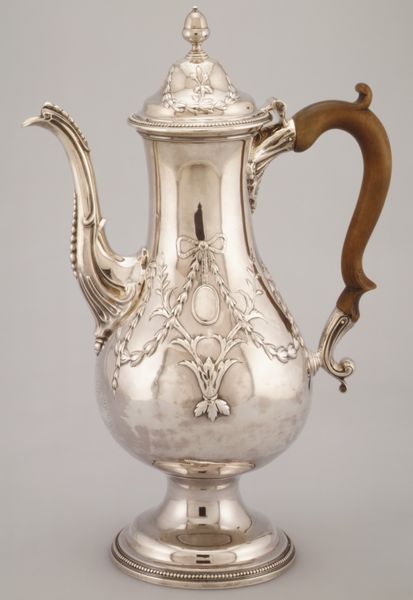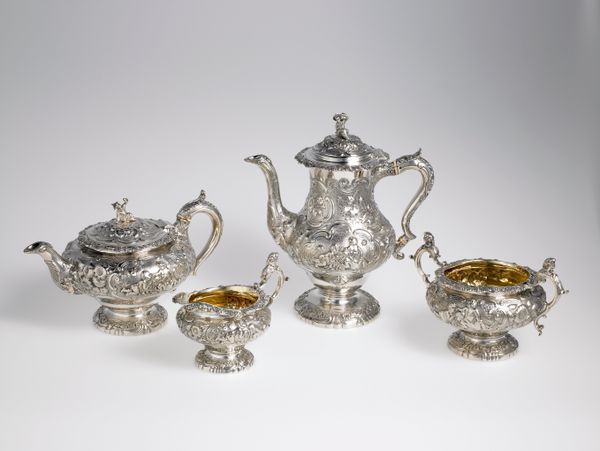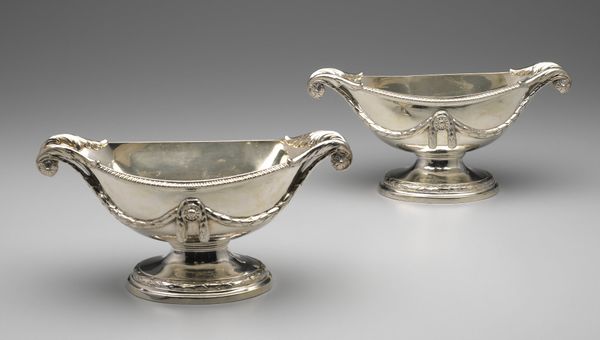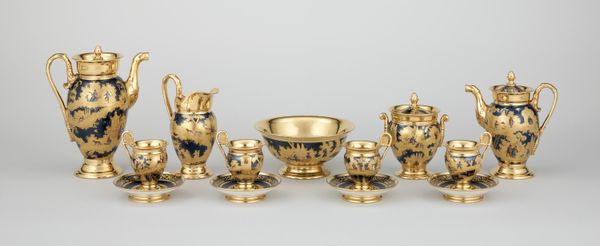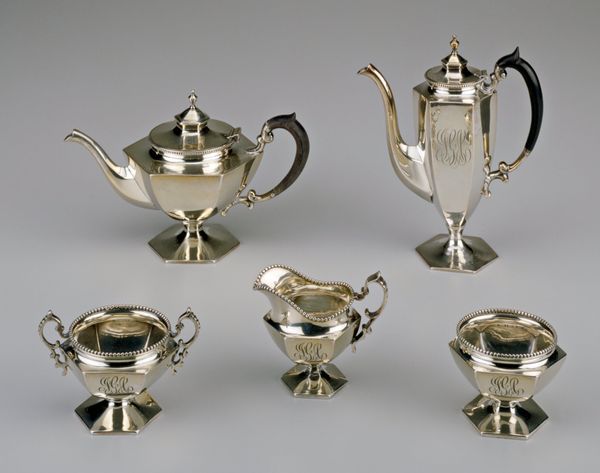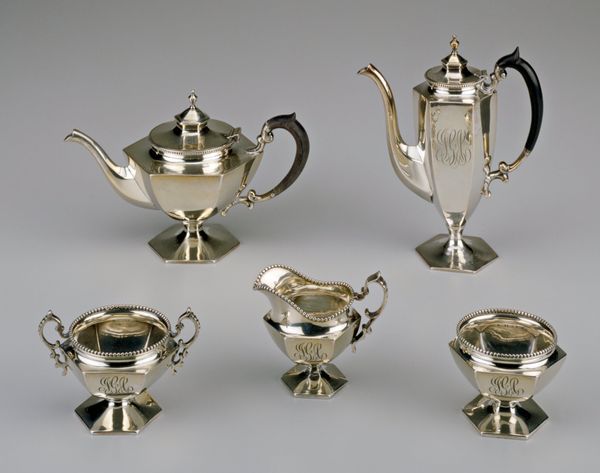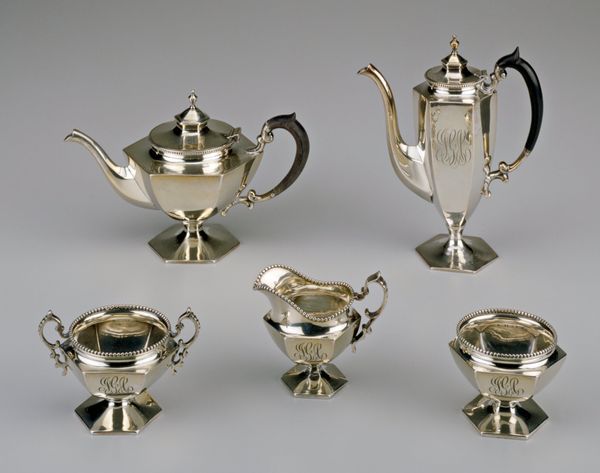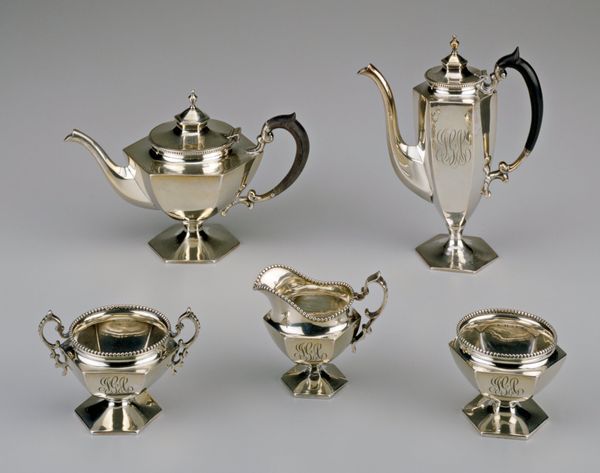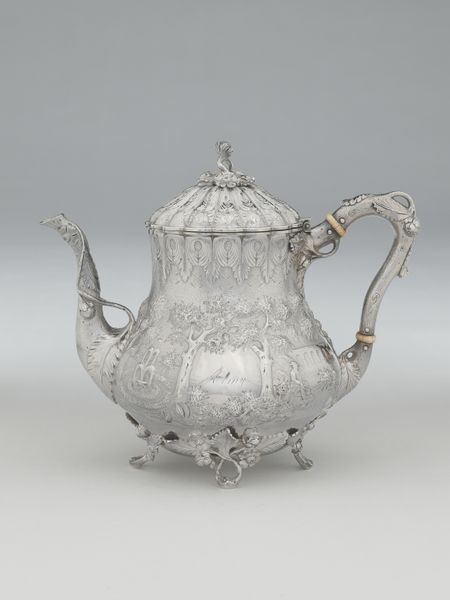
silver, metal
#
art-nouveau
#
silver
#
metal
#
ceramic
#
decorative-art
Dimensions: Coffee Pot: 23.5 × 16.1 × 8.5 cm (9 1/4 × 6 3/4 × 3 3/4 in.); Sugar Bowl 6.6 × 9.8 × 10.1 cm (2 5/8 × 3 7/8 × 4 7/8 in.)
Copyright: Public Domain
Editor: Here we have the "Saracenic" Coffee Pot and Sugar Bowl by Tiffany and Company, created around 1895. They are absolutely beautiful, made from silver and displaying amazing craftsmanship. The design, with the elaborate detailing, suggests a Middle Eastern influence. What stands out to you about this piece? Curator: The immediate thing I notice is the clear manipulation of materials for social ends. Tiffany, a prominent company, deliberately employs silver – a precious material accessible only to the elite at the time – and manipulates it through intensive labour. It’s an overt display of wealth and power, using “Saracenic” motifs as an exotic flavoring, appropriating from another culture. The value here resides not only in its functional capacity but more prominently in its status as a commodity. Editor: So you're saying the materials and the manufacturing process are crucial to understanding the work's meaning? Curator: Precisely. The "Saracenic" style isn’t merely decorative; it’s a marketing strategy. It creates an air of orientalism which, in turn, alludes to luxury, distant lands and in general, something beyond the daily life of its owners, appealing to their consumerist desires and societal aspirations. Where do they mine the silver, how is it refined, who is making the tools needed to make these embellishments on these pots? It gives us a chance to look into those laborers’ situations as well, the labor creating these refined products. Editor: That's a really interesting perspective. I had mainly focused on the aesthetic aspects and historical style. It highlights that decorative arts are not simply objects, but complex pieces of cultural production. Curator: Absolutely. Examining art through a materialist lens reveals these objects as products of specific economic and social conditions. They were crafted for an audience within that system. Looking at who had the silver, the tools, and the knowledge to turn all these things into something 'precious' creates the base on which the artistry rests. Editor: I never thought of it that way! It definitely gives me a deeper appreciation for how the cultural values and means of production are embodied in such luxurious objects.
Comments
No comments
Be the first to comment and join the conversation on the ultimate creative platform.
